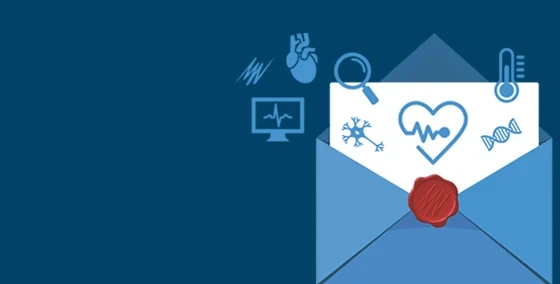
Dr. James Clark, King's College London.
2017 Winner: Most Innovative Teacher Award
Each year, King's College London recognizes and celebrates the teaching achievements of their staff.
This year, the winner of King's Most Innovative Teacher Award is Dr. James Clark, for his novel approach of posting online video tutorials that successfully reach and engage his students.
In the process of doing this, James has generated over 4.2 million views on his YouTube Channel.
Cold, Hypoxia and shivering - Human and Applied Physiology 2017
Online library of ‘how-to’ videos for students
James is a Senior Lecturer in Aerospace Physiology at King's College London and Programme Director of the MSc in Human & Applied Physiology.
His award-winning library of online videos is an invaluable resource of “how-to” videos for undergraduate and postgraduate students.
James says, “many of the tutorials that are on the website currently are in response to students asking questions. And when more than one student asks the same question you feel vindicated having a system like this – because, of course, if the students have all asked the same question you can give them all the answer which is a very useful thing.”
Topics cover data analysis, lab skills, e-learning, presentation and other life science skills. He also encourages students to submit requests for videos that they would like made.
The problem: students need instruction on data capture and analysis systems
The cache of videos began after James noticed a problem that many life science educators can relate to: students are expected to use data capture and analysis systems for their coursework or research, but they don’t receive instruction on how to use these systems.
James says, “Not all modules and courses can include full details on “how to”: How do you analyze data? How do you use the software you're supposed to use? How does the software integrate with word processing application spreadsheets? A lot of the time in physiological sciences, for example, there are some software programs that are just so specific to a particular measurement that you'd never use them again, and it's hard to spend time teaching these within a research or a teaching program.”
Students can access tutorials whenever and wherever they want
Another problem was that students tend to do their data analysis work off campus, after hours. James notes that “we expect students to do a laboratory practical or a field trip and we expect them to acquire data and use that data for their write-ups. However, students usually do the bulk of their data analysis at home, so they don’t necessarily have access to their lecturers or to their colleagues to discuss issues and problems that arise with the technology.”
His response to these problems was to make screencast video tutorials showing students how to perform specific data analysis functions, on software like LabChart and Excel. He posted the videos online, first on his Dory Video YouTube Channel and then on a King’s site, Essential Life Science Tutorials. Online delivery allows students access to the ‘how to” videos anytime, from anywhere, and lets them view the tutorials as many times as they need, at the pace they need, to understand the technologies and concepts.
Using a Macro in LabChart to calculate RR intervals and Heart Rate Variability (HRV)
The benefits of using video for education
The benefits of using video for education are well known and well researched. In some cases, it has been shown that video can be as good as an instructor in communicating facts or demonstrating procedures to assist in mastery learning where a student can view complex clinical or mechanical procedures as many times as they need to. The interactive features of modern web-based media players can be used to promote ‘active viewing’ approaches with students (Galbraith, 2004).
More recently, Willmot et al (2012) show that there is strong evidence that utilizing digital video can inspire and engage students when incorporated into student-centered learning activities through:
- increased student motivation
- enhanced learning experience
- higher marks
- development potential for deeper learning of the subject
- development of learner autonomy
- enhanced team working and communication skills
- a source of evidence relating to skills for interviews
- learning resources for future cohorts to use
- opportunities for staff development (CPD). (p.3)
Reaching a wider audience
For James, an unexpected benefit of creating the video tutorials and blog content has been that his tutorials have engaged a wide pool of viewers. Currently, James’ YouTube Channel – Dory Video - has over 440 videos, more than 6,800 subscribers and has had over 4.2 million views...and counting! James says, “This is very satisfying considering most of the courses we teach on have between 12 and 60 people on them.”
“One of my own students was in the laboratory the other day telling me that a friend of hers had found these wonderful tutorials online and did they know about them? And when she sent the link, it was my website! That was a student from Reading University who had found the website by doing a search on Google. So that's quite satisfying to know it's actually reaching more than just the King's College students. Other students are benefitting which is quite nice.”
Dr. James Clark and ADInstruments
As a Senior Lecturer in Aerospace Physiology and Programme Director of the MSc in Human & Applied Physiology, James uses ADInstruments’ software in over a dozen courses. LabChart software is used extensively for data analysis, while Lt, a specialized life-science learning platform, is used to deliver assessments for the Extreme Physiology course. Lt is also used to run lessons in the effects of temperature on exercise and the Valsalva maneuver.
Academic papers
Galbraith, J., ( 2004), 'Active Viewing: An Oxymoron in Video-Based Instruction?', Society for Applied Learning Technologies Conference, http://designer.50g.com/docs/Salt_2004.pdf
Abstract: This presentation will review an innovative study on “self-monitoring” behaviors and “Self- Regulated Learning” (SRL) while viewing media-based instruction. Of particular interest is how students use variable speed playback (VSP) abilities now available in their players. The research study aimed to understand what relationship (if any) did students perceive existed among their particular viewing habits, playback speed of video lectures, and their learning? Streaming media-based instruction continues to grow in volume and accessibility. Many inexpensive products on the market today help create and distribute educational and training presentations. Individual learners and instructional technologists should proceed knowledgeably when using VSP functionality.
Willmot, P., Bramhall, M., Radley, K. (2012) Using digital video reporting to inspire and engage students. Retrieved from http://www.raeng.org.uk/education/hestem/heip/pdf/Using_digital_video_reporting.pdf
Abstract: Digital storytelling involves combining narrative with digital content to create a short movie. Digital stories can include interactive movies with highly produced audio and visual effects or presentation slides with narration or music. Some learning theorists believe that as a pedagogical technique, storytelling can be effectively applied to nearly any subject. Constructing a narrative and communicating it effectively require one to think carefully about the topic and the audience's perspective. The "7 Things You Should Know About..." series from the EDUCAUSE Learning Initiative (ELI) provides concise information on emerging learning practices and technologies. Each brief focuses on a single practice or technology and describes what it is, where it is going, and why it matters to teaching and learning.

